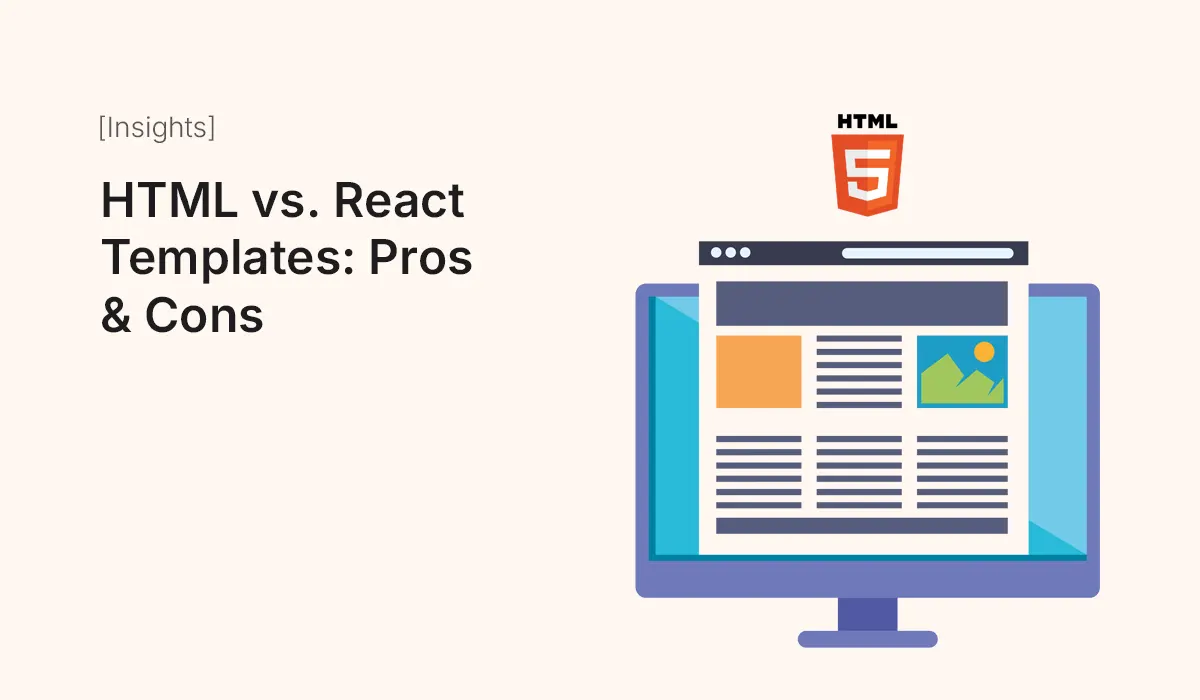Introduction
When building a website, one of the biggest decisions developers and businesses face is choosing between HTML templates and React templates. Both offer unique advantages, but the right choice depends on your project goals, technical requirements, and long-term scalability.
In this article, we’ll compare HTML vs. React templates, break down their pros and cons, and help you decide which is the better fit for your next project.
What Are HTML Templates?
HTML templates are pre-built static layouts made with HTML, CSS, and sometimes JavaScript. They are lightweight, easy to set up, and ideal for straightforward websites such as portfolios, blogs, and landing pages.
Pros of HTML Templates
- Simple & Lightweight – Easy to set up with minimal dependencies.
- Faster Loading Times – No heavy frameworks required.
- Beginner-Friendly – Great for learning and practicing web basics.
- SEO-Friendly – Clean HTML structure helps with search engine visibility.
- Cost-Effective – Many free and affordable options are available.
Cons of HTML Templates
- Static Nature – Limited dynamic functionality without extra coding.
- Difficult to Scale – Managing multiple pages can become repetitive.
- Less Interactive – Requires additional JavaScript for advanced features.
What Are React Templates?
React templates are pre-built website templates built with React.js, a popular JavaScript library for building user interfaces. They are dynamic, reusable, and highly scalable—perfect for modern web applications.
Pros of React Templates
- Dynamic Content – Automatically updates without reloading.
- Reusable Components – Speeds up development with modular design.
- Scalable – Ideal for large, complex web apps.
- Rich Interactivity – Supports animations, state management, and user-driven interactions.
- Strong Community Support – Abundance of resources and libraries.
Cons of React Templates
- Steeper Learning Curve – Requires knowledge of JavaScript and React concepts.
- Heavier Setup – Needs build tools like Webpack or Vite.
- Performance Overhead – Can be slower than pure HTML for small projects.
- SEO Challenges – React apps require server-side rendering (SSR) or prerendering for SEO.
Side-by-Side Comparison
| Feature | HTML Templates | React Templates |
|---|---|---|
| Ease of Use | Beginner-friendly | Requires React knowledge |
| Performance | Fast loading for small sites | Better for dynamic, complex apps |
| SEO | Great for static sites | Needs SSR/prerendering |
| Scalability | Limited | Highly scalable |
| Interactivity | Basic (needs extra JS) | Advanced interactivity built-in |
| Best For | Portfolios, blogs, landing pages | Dashboards, SaaS, web applications |
When to Use HTML Templates
- You’re building a static website (portfolio, landing page, blog).
- You want something fast, lightweight, and beginner-friendly.
- SEO is your top priority, and you don’t need complex interactivity.
- You’re working with a tight deadline or limited budget.
When to Use React Templates
- You’re building a dynamic web app (dashboard, SaaS, marketplace).
- You need scalability and modular components.
- User experience requires real-time updates and interactivity.
- You have a team familiar with React and modern development tools.
Conclusion
Both HTML and React templates have their place in web development.
- If you want simplicity, speed, and SEO-friendliness, HTML templates are the way to go.
- If you need scalability, dynamic content, and interactivity, React templates will serve you better.
Ultimately, your choice should depend on project scope, future growth, and your team’s technical expertise.
Decide between HTML vs. React templates based on your project needs—whether you need simplicity and speed or scalability and interactivity, there’s a template that’s right for you!






